Gartner’s 15 Hyperconverged Infrastructure Magic Quadrant Leaders
CRN breaks down the 15 vendors ranked on Gartner’s new 2019 Hyperconverged Infrastructure Magic Quadrant including Cisco, Dell EMC, HPE, Nutanix, Pivot3 and VMware.

The Top 15 HCI Vendors Worldwide
By 2023, 70 percent of enterprises will be running some form of hyperconverged infrastructure, up from less than 30 percent in 2019, according to Gartner’s new Magic Quadrant for Hyperconverged Infrastructure.
The hyperconverged infrastructure (HCI) market is rapidly expanding in 2019 as vendors are making substantial inroads into a broader set of use cases and deployment options, although some limitations still exist. Gartner said that over the past year it has witnessed increased consideration of hyperconvergence in mission-critical enterprise applications as well as market leaders turning their innovation focus to edge environments.
As HCI leaders expand their deployment options to include more cloud providers—such as Amazon, Google and Microsoft—vendors are increasingly focused on new tools and capabilities to monitor, secure, manage, optimize and govern diverse on-premises and cloud deployments. Vendors are also now beginning to offer artificial intelligence functions to automatically improve performance and prevent failures.
Here are the 15 market-leading vendors in hyperconvergence that made Gartner’s new 2019 Hyperconverged Infrastructure Magic Quadrant, along with the research firm’s assessments of each company’s strengths and weaknesses in the space.

Gartner’s Hyperconverged Infrastructure Methodology
To be included in Gartner’s new Hyperconverged Magic Quadrant, vendors needed to meet various technical and business benchmarks including the ability to provide an integrated software stack that includes unified management, software-defined compute, storage and, optionally, networking. Vendors also needed to offer virtualized local, internal and direct-attached storage (DAS); provide a mechanism to pool internal and direct-attached primary storage across servers into logical virtual storage; and develop the storage and data management services integrated in the solutions.
In terms of business criteria, vendors provide evidence of a minimum of 100 production customers that genereated to revenue in at least two major geographies and deliver complete Level 1 and Level 2 support either directly or through a services provider.
Gartner's Magic Quadrant ranks vendors on their ability to execute and completeness of vision and places them in four categories: Niche Players (low on vision and execution), Visionaries (good vision but low execution), Challengers (good execution but low vision) and Leaders (excelling in both vision and execution).
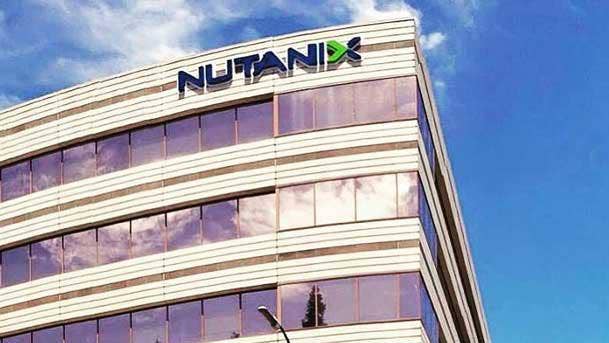
Leader: Nutanix
Nutanix took home the gold as the top HCI provider in terms of execution on the Magic Quadrant as well as ranking second for vision. The San Jose, Calif.-based hyperconverged infrastructure pioneer has transitioned over the past two years into a software-only HCI vendor while at the same time vastly expanding its product portfolio. Nutanix’s stock recently surged after a successful first fiscal quarter thanks to huge traction in large enterprises and with new customers.
Nutanix’s HCI offering is composed of its software stack, which includes software-defined storage; AOS; an infrastructure control plane, Prism; and its AHV hypervisor. In 2019, the company introduced its Nutanix Era Database-as-a-Service offering; application self-service and app life-cycle management Nutanix Calm; Nutanix Objects for S3 object storage; and Xi Leap disaster recovery service. Nutanix offers subscription, term-based software licenses that are portable across hardware platforms and clouds.
Strength: Nutanix has strong customer loyalty while its software platform attracts customers who prioritize flexibility.
Weakness: Gartner said cultural “resistance” within some infrastructure teams to adopt AHV prevents IT leaders from taking advantage of additional Nutanix products.
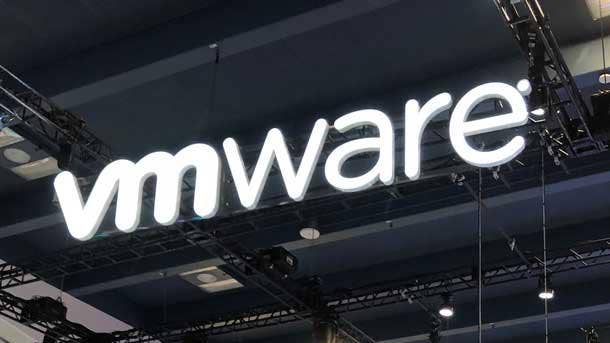
Leader: VMware
Virtualization and hyperconverged software superstar VMware won first place for vision on the Magic Quadrant while also ranking second for execution. The Palo Alto, Calif.-based company, which has a market cap of nearly $62 billion, co-engineers with Dell EMC the most popular hyperconverged infrastructure system in the world, VxRail, which was recently revamped to include a four-socket platform and new NVMe innovation.
The company’s software-defined storage vSAN product natively integrated with its vSphere hypervisor is the foundation of VMware’s HCI. VMware expanded HCI on-premises to offer VMware Cloud Foundation (VCF), consisting of vSphere, vSAN, NSX, vRealize and life-cycle automation to accelerate private cloud deployments. VCF is also deployed on VMware Cloud on AWS, Microsoft Azure, Alibaba Cloud, Oracle Cloud, IBM Cloud and Google Cloud Platform as well as VMware Cloud on Dell EMC. vSAN ReadyNodes are jointly certified by both VMware and more than 15 OEM vendors.
Strength: VMware has a large install base and is considered by infrastructure and operations leaders as one of the most trusted software providers on the planet.
Weakness: The company’s offering is not suitable for customers looking to build a hypervisor-independent infrastructure platform.
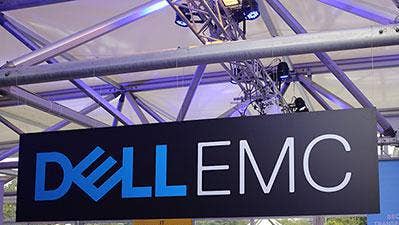
Leader: Dell EMC
Dell EMC won the bronze medal for both execution and vision on the Magic Quadrant. The Round Rock, Texas-based storage market-share leader offers VxRail alongside VMware, with both vendors being part of $91 billion Dell Technologies. Dell EMC introduced this year VxRail Analytical Consulting Engine (ACE), a cloud-based centralized data collection and analytics platform to simplify the management of VxRail clusters.
VMware Cloud Foundation (VCF) is available on the VxRail offering with full stack integration or customers can use VxRail’s REST APIs for customizable cloud solutions. Leading use cases for Dell EMC’s VxRail include core IT, mission-critical, cloud, edge and virtual desktop infrastructure. The company develops software specifically for VxRail—such as RecoverPoint and Smart Fabric Services— that are designed to enhance VMware functionality and ease-of-use for customers.
Strength: The company has a broad global sales and support reach that enables the sale and installation of VxRail for customers needing HCI in multiple locations around the world.
Weakness: Dell EMC is tightly integrated with VMware, limiting businesses to a single hypervisor option on the VxRail offerings.
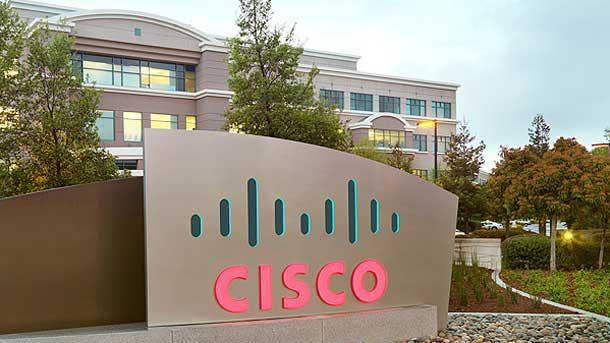
Leader: Cisco Systems
The worldwide networking leader ranks fourth for execution and fifth for vision on the Magic Quadrant. Cisco’s flagship HCI offering is its HyperFlex appliance, which the San Jose, Calif.-based company launched in 2016. Cisco, which is currently shaking up several of its businesses units, overthrew Hewlett Packard Enterprise in the second quarter of 2019 to take third place in the global HCI market by generating $114 million in revenue, up nearly 50 percent year over year.
This year, Cisco introduced a cloud-managed two-node cluster with Cisco SD-WAN integration for edge and remote office/branch office use cases. To enhance HyperFlex’s capabilities to support workloads, Cisco launched support for Intel’s latest Xeon Scalable processors and an NVMe hyperconverged appliance that utilizes 3-D XPoint technology in both cache and capacity storage tiers. Other enhancements include HyperFlex’s Acceleration Engine, an acceleration card that offloads in-line compression from the CPU to enable petabyte scalability and enhanced Kubernetes support.
Strength: The Cisco-only HyperFlex solution, along with multi-cloud support, gives the company product depth that can be attractive to IT leaders.
Weakness: Cisco doesn’t off its software-defined storage HyperFlex HX Data Platform as a software-only solution or through third-party server partnerships.
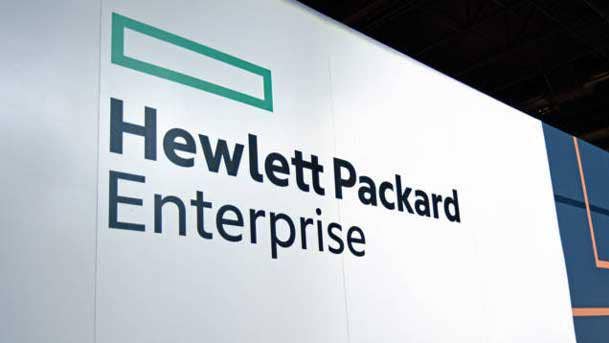
Leader: Hewlett Packard Enterprise
Hewlett Packard Enterprise ranks fifth for execution and sixth for vision on the Magic Quadrant. The company shook up the industry this year by launching a strategic partnership with Nutanix around HCI. In 2019, HPE added its artificial intelligence InfoSight predictive analytics software to its flagship HCI offering, HPE SimpliVity, while also launching an attack on the midmarket. HPE offers flexible consumption models including HPE GreenLake as-a-service offering based on metered usage.
HPE SimpliVity is delivered as an appliance, integrating HPE servers, hypervisors, software-defined storage, backup and data services. HPE offers a guarantee on its data services highlighted by data efficiency and reliability. Customers can acquire HPE SimpliVity through solution providers, with a limited number of direct sales available. HPE recently added SimpliVity validated design for Google Cloud’s Anthos for container-based private or hybrid cloud, as well as releasing an AMD-based single-socket HPE SimpliVity 325 offering for remote office/branch office and edge.
Strength: Gartner said customers express a “high degree” of satisfaction with HPE SimpliVity data efficiency, protection and disaster recovery features.
Weakness: SimpliVity does not support native hybrid cloud workloads and has no integration with public cloud IaaS for virtualized workloads.

Challenger: Pivot3
For years, Pivot3 has consistently been ranked in the HCI market alongside much larger competitors thanks to the company’s video surveillance and automation innovation as well as traction with enterprise and Fortune 100 customers. The Austin, Texas-based company ranks among the top group for execution on the Magic Quadrant and among the middle of the pack for vision. To expand its hyperconverged infrastructure footprint, Pivot3 revamped its Partner Program to drive greater channel momentum.
Acuity is Pivot3’s HCI flagship offering. The company has incorporated new security policy management features, including policy-based data-at-rest encryption and algorithm offloading. Pivot3 offers Virtual Security Operations Center to allow customers to replace expensive graphics-enabled workstations with an HCI offering that delivers secure client desktops to security operators or first responders at any location. Pivot3’s largest defense and intelligence deployments are advanced VDI use cases.
Strength: Pivot3 analytics and VDI features for large-scale applications are popular in the federal, health-care and higher-education markets.
Weakness: Acuity’s lower market penetration outside video surveillance and VDI can make Pivot3 unattractive to customers seeking core IT and cloud HCI.

Challenger: Huawei
Huawei, considered by some as the crown jewel of China’s tech industry, ranks sixth in execution on the Magic Quadrant and among the middle of the pack in vision. The China-based infrastructure giant offers FusionCube for HCI that includes storage, Huawei ’ s own Kernel-based Virtual Machine (KVM) and Xen-based FusionSphere hypervisors, as well as support for VMware.
In 2019, Huawei targeted three initiatives: “Any workload, Any Site, One System;”; “High Performance, High Reliability, Simple;” and “Hybrid Cloud-Native.” FusionCube is used primarily by midsize businesses for high-density server-virtualized workloads; VDI, database and mission-critical applications; edge environments; and hybrid cloud installations. Huawei continues to be strong in China, and it is helped by its partnerships with SAP, Oracle and Microsoft, making Huawei the provider for many customers seeking solutions in China.
Strength: Huawei’s networking infrastructure install base makes FusionCube appealing to customers implementing use cases for cloud, edge and VDI.
Weakness: Huawei has limited market presence, third-party support and certification for FusionCube and related products in North America and other Western geographies.

Visionary: Microsoft
The infrastructure software and public cloud service titan doubled down on its hyperconverged infrastructure strategy in 2019 by unveiling its Azure Stack HCI portfolio. Due to this vision, Microsoft ranked fourth for vision on the Magic Quadrant and among the middle of the pack for execution. Microsoft’s Azure Stack HCI is designed for customers who want to run virtualized applications on hyperconverged infrastructure. It was introduced in the Windows Server 2019 Datacenter edition, which follows Microsoft’s initial HCI offering on Microsoft’s Windows Server 2016 Datacenter edition.
Azure Stack HCI includes Microsoft’s Hyper-V hypervisor and Storage Spaces Direct for storage virtualization. Over the past year, Azure Stack HCI enhancements include improved manageability through Windows Admin Center; integration with improved security; and Day 1 support for Samsung’s Z-SSD, Intel Optane, AMD’s EPYC and Intel’s Xeon Scalable processors.
Strength: Existing Microsoft Windows Server 2016/2019 Datacenter edition customers can implement HCI without paying additional license fees for hypervisors, software-defined networking, security or storage virtualization.
Weakness: Gartner said many organizations are “unaware” of Azure Stack HCI or confuse the HCI solution with Azure Stack, as it’s insufficiently marketed within Microsoft’s broad portfolio.

Niche Player: Scale Computing
Indianapolis-based Scale Computing ranks ahead of all the other Niche Players on Gartner’s Magic Quadrant for both vision and execution, almost ranking as a “visionary” compared to Niche Player. The company began shipping its flagship hyperconverged infrastructure HC3 product in 2012. Last month, Scale Computing put its full HC3 solution into ultra-small Lenovo M90n Nano and Intel NUC products to run full mission-critical apps at the edge.
This year, Scale Computing introduced the HE500 model for edge computing environments, with cost-competitive pricing per node. The company also introduced Intel Cascade Lake processors in the HC1000 and HC5000 product series for improved VDI performance. HC3 is used primarily in edge and remote office/branch office deployments and the primary data centers of small and medium enterprises for business-critical and consolidation workloads. On the OEM front, Scale Computig established an agreement with Acronis to provide on-premises or cloud backup and bare-metal restore to non-HC3 systems, and ransomware protection of backups.
Strength: Scale Computing provides extremely low-cost offerings that require limited hardware investment for edge locations.
Weakness: Gartner said the company is not a fit for large organizations seeking a standardized core-to-edge-to-cloud strategy.
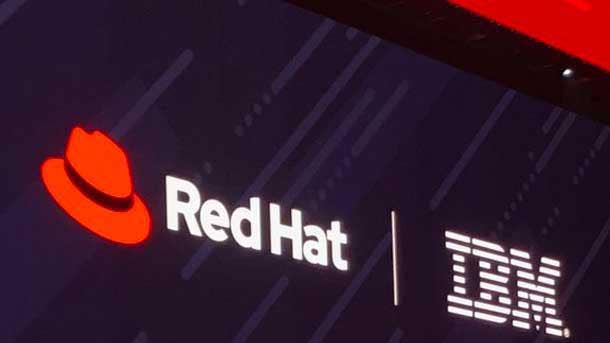
Niche Player: Red Hat
Recently acquired by IBM for a whopping $34 billion, Red Hat ranks among the bottom of the pack for both execution and vision on the Magic Quadrant. This year, the company restructured its business organization and built a dedicated marketing function to drive awareness and sales enablement for its HCI solution.
Red Hat Hyperconverged Infrastructure for Virtualization was released in 2017 and uses the KVM hypervisor and Gluster Storage virtualization. In 2018, Red Hat released Hyperconverged Infrastructure for Cloud built on its Ceph Storage and OpenStack Platform as core components in the offerings. Red Hat has expanded its HCI for Cloud offering to its virtualization offering, which includes integrated deduplication and compression capability via the acquisition of Permabit and a unified life cycle for OpenStack and Ceph Storage technologies.
Strength: The company has a combined OS, virtualization, storage and cloud toolset to manage HCI, leveraging its depth of Linux and open-source software expertise.
Weakness: Red Hat’s low hyperconverged infrastructure market penetration and new parent company may cause IT leaders to be reluctant to consider it.
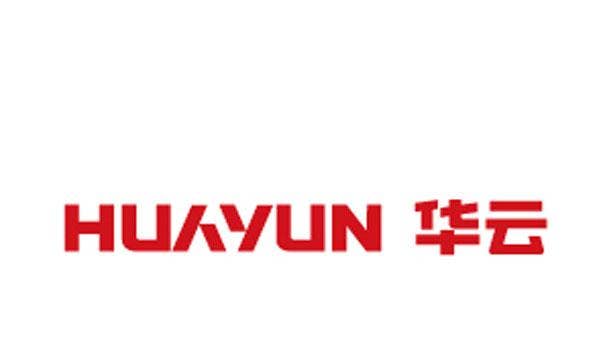
Niche Player: Huayun Data Group
China-based Huayun Data Group joined the global HCI market through its acquisition of Maxta this year. The privately held company also launched its flagship HCI offering, ArcherOS, within China in 2019. Huayun Data Group ranks among the bottom of the pack for both execution and vision on the Magic Quadrant.
ArcherOS is based on Maxta’s core HCI and SDS technology integrated with its own technology to provide private and hybrid cloud capabilities. The company also enabled the integration of ArcherOS with other technologies from security to independent software vendor applications via its existing ecosystem of partners. Huayun Data Group intends to follow a dual-brand strategy by utilizing the ArcherOS name in China and retaining the Maxta name outside China. For the cloud use case, ArcherOS/Maxta seeks to bring more public-cloud-like operational efficiency to MSPs and enterprises by enabling independent compute and storage scaling.
Strength: The company offers single-node pricing for its software options making its HCI solutions appealing for SMBs and organizations with small-node edge requirements.
Weakness: Huayun Data Group’s dual-brand strategy may be confusing to customers seeking HCI.
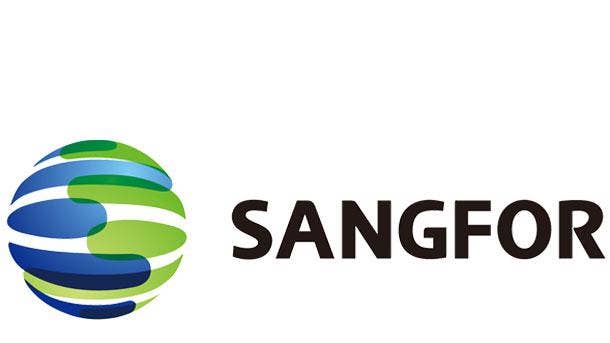
Niche Player: Sangfor Technologies
Founded in 2000, the China-based publicly held IT developer shipped its Sangfor HCI in 2015. The hyperconverged infrastructure offering was initially focused on Oracle RAC but now supports a broader range of enterprise applications. Sangfor Technologies ranks among the bottom of the pack for both execution and vision on the Magic Quadrant.
In 2019, Sangfor has focused on expansion beyond its home country and Asia, with notable expansion in select countries in Europe and the Middle East. Sangfor has also launched Sangfor Community that provides a knowledge base, online technical support, installation and configuration guides, and a community forum. Sangfor aCloud is used primarily for mission-critical, core IT and VDI use cases in midsize enterprises.
Strength: Sangfor provides a cost-competitive alternative for small and medium enterprises.
Weakness: More than 90 percent of Sangfor HCI sales occur in the People’s Republic of China, with local support resources limited outside Asia.
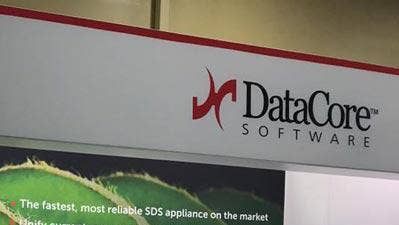
Niche Player: DataCore
Primarily know for its software-defined storage and storage virtualization innovation, DataCore SDS can be deployed on existing servers or new, custom configurations. The Fort Lauderdale, Fla.-based company ranks among the bottom of the pack for both execution and vision on the Magic Quadrant. The offering is based on DataCore’s SANsymphony SDS product.
This year, DataCore introduced DataCore HCI-Flex fixed-configuration hardware appliances; data-at-rest encryption using an industry-standard Advanced Encryption Standard algorithm for improved security; and DataCore Insight Services, a Software-as-Service analytics platform for improved monitoring and management. DataCore SDS offers Continuous Data Protection for physical servers and virtual machines, as well as container hosts via Docker and Kubernetes plug-ins. DataCore SDS is used primarily for mission-critical, core IT, and edge use cases in small and midsize enterprises.
Strength: The company provides a robust set of data services and price-competitive, scaled-down offerings including a two-node, high-availability configuration.
Weakness: Gartner said IT leaders cite poor support and channel partner knowledge as areas of concern.

Niche Player: StorMagic
England-based StorMagic ranks the lowest for vision on the Magic Quadrant and second lowest for execution. The privately held company’s HCI product is SvSAN, which began shipping in 2008. StorMagic HCI has a consistent focus on cost-effective, simple-to-manage offerings for remote office/branchoffice and edge environments, and it enables two-node solutions for less than $10,000 per site.
StorMagic recently introduced StorSecure encryption with integrated key management; three-node high-availability clustering that enables continuous availability in the event of a double-node failure; and open KVM support. StorMagic’s SvSAN is used primarily for mission-critical applications running in edge and remote office/branch office locations ranging from medium to very large businesses across the Americas, EMEA and Asia-Pacific. StorMagic is also deployed in the core data centers of small and medium enterprises.
Strength: StorMagic SvSAN provides hypervisor flexibility with support for VMware ESXi, Microsoft Hyper-V and open KVM.
Weakness: The company does not offer data deduplication, compression or erasure coding, and doesn’t integrate directly with any cloud providers.
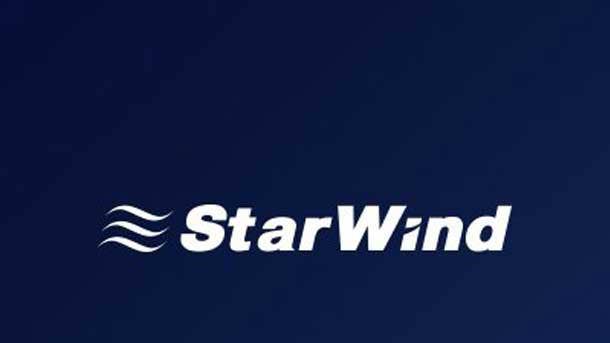
Niche Player: StarWind
StarWind is a developer of HCI and SDS offerings with its flagship offering being the StarWind HyperConverged Appliance (HCA). The Middleton, Mass.-based company has honed its marketing focus at bringing enterprise-level hyperconvergence features to the SMB market at appealing costs. StarWind ranked in last place for execution on the Magic Quadrant and was the second lowest for vision.
In 2019, StarWind introduced its Command Center, Virtual Appliance and ProActive Premium Support Extended as enhancements to its HCI offerings. StarWind has been expanding its channel partner relationships outside the U.S. StarWind HCA focuses on specific features for each use case like high availability and high performance for edge; storage replication to prevent downtime and data loss for mission-critical workloads; and simplicity and flexibility for core IT. The vendor also enables hardware-agnostic offerings with its StarWind Virtual SAN HCI software and sells a backup appliance, the StarWind Virtual Tape Library Appliance.
Strength: StarWind offers a high level of customization through its engineering teams, swaying IT leaders who seek specific features and functions.
Weakness: The company is not for customers desiring large resources, brand recognition or broad market penetration.